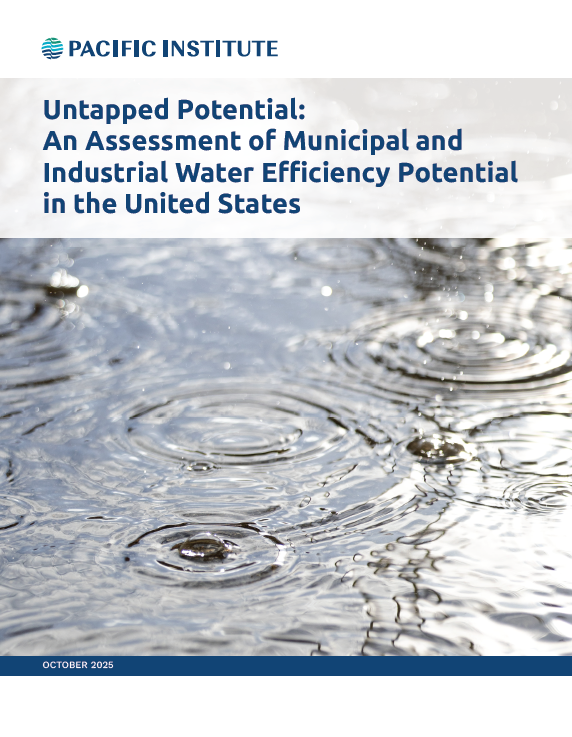Untapped Potential: An Assessment of Municipal and Industrial Water Efficiency Potential in the United States

Untapped Potential: An Assessment of Municipal and Industrial Water Efficiency Potential in the United States
Overview
A new first-of-its-kind assessment from the Pacific Institute finds that improving water efficiency in U.S. homes, businesses, institutions, and reducing leakage in water distribution systems, can save 14.0 to 34.1 million acre-feet of water per year (12.5 to 30.4 billion gallons per day). The study finds that even basic upgrades to meet existing standards and eliminating water waste could cut water use by one-quarter nationwide. The most ambitious efforts, adopting technologies and strategies available today, could drive reductions up to 60%, returning water demands to levels last seen in the 1960s. Water savings are possible in every state and across sectors. The assessment offers decision-makers insights into the diversity of water savings opportunities available.
Key Messages
- Existing technologies and practices could save 14.0 to 34.1 million acre-feet per year, equivalent to 12.5 to 30.4 billion gallons each day. This represents a 25% to 60% reduction in municipal and industrial water use.
- Households offer major water savings potential both indoors and outdoors, while businesses and institutions present smaller yet still significant savings opportunities. Fixing leaks in water delivery systems represents a large and cost-effective, but underfunded, opportunity.
- Water efficiency saves water and energy, cuts utility costs, and protects the environment, but it is often overlooked in water supply planning and underfunded compared to new supply projects.
- Water savings are possible in every state and across sectors. The assessment offers decision-makers insights into the diversity of water savings opportunities available.

